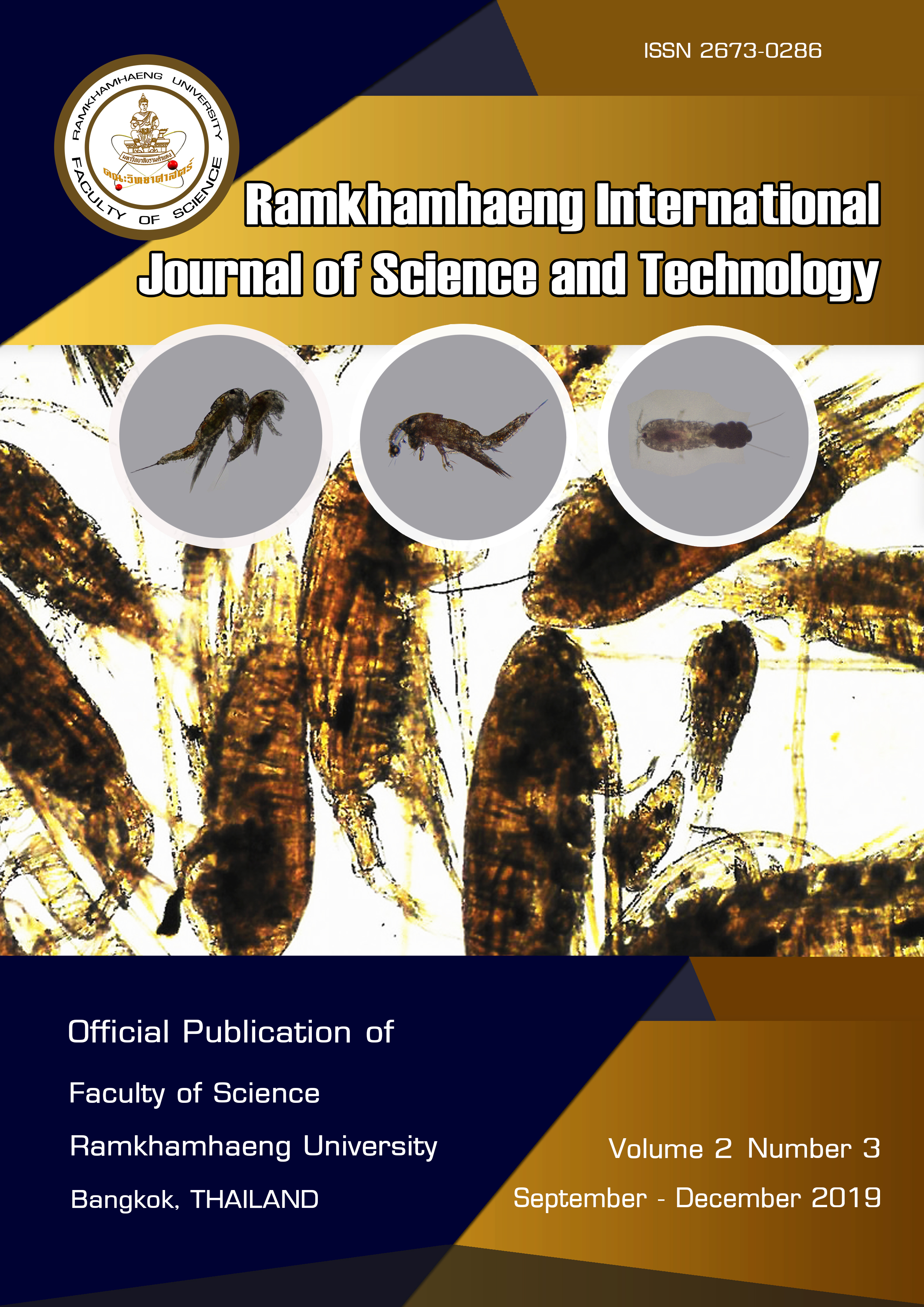Distribution of different coral morphs of the coral Porites lutea in the Gulf of Thailand
Keywords:
abundance, coral reefs, diversity, Porites, Gulf of ThailandAbstract
The scleractinian corals Porites complex are dominant corals generally found in coral reefs in the Gulf of Thailand. However, understanding of their biology and ecology is relatively limited. This study aimed to explain the taxonomy and ecology of the massive Porites complex in the Gulf of Thailand by focusing on the distribution patterns and ultrastructures of Porites complex that have different morphs in the eastern, inner and western Gulf of Thailand. Permanent belt-transects, 1 x 100 m2, were used to observe coral colonies at fifteen study sites. In order to investigate the ultrastructure of corals. Based on the field observations, three major morphs of Porites complex were clearly observed, i.e. brown (B), green (G), and yellow (Y). The B-morph was the most dominant at all study sites. The Y-morph was more abundant than G-morph at the study sites in the eastern and Inner Gulf of Thailand. The similarity of multidimension scaling analysis and hierarchical clustering showed analogous results. The size classes of colored different P. lutea revealed that colonies ranged of 25-50 cm were found as an abundant size in the Gulf of Thailand. However the G-morph was more abundant than Y-morph at the study sites in the western Gulf of Thailand.
References
Bessat F, Buigues D (2001) Two centuries of variation in coral growth in a massive Porites colony from Moorea (French Polynesia): a response of ocean-atmosphere variability from south central Pacific. Palaeogeography, Palaeoclimatology, Palaeoecology 175: 381-392
Brown BE, Howard LS (1985) Assessing the effects of “stress” on reef corals. In Advances in marine biology 22:1–63
Forsman Z, Wellington GM, Fox GE, and Fox RJ (2015) Clues to unraveling the coral species problem: distinguishing species from geographic variation in Porites across the pacific with molecular markers and microskeletal traits. PeerJ 3:e751
Gleason DF (1998) Sedimentation and distributions of green and brown morphs of the Caribbean coral Porites astreoides Lamarck. Journal of Experimental Marine Biology and Ecology 230(1): 73-89
Lough JM, Barnes DJ (2000) Environmental controls on growth of the massive coral Porites. Journal of Experimental Marine Biology and Ecology 245: 225–243
Loya Y (1976) Settlement, mortality and recruitment of a Red Sea scleractinian coral population. In Coelenterate ecology and behavior, Springer, Boston, MA, pp. 89-100
McClanahan TR, Weil E, Maina J (2009) Strong relationship between coral bleaching and growth anomalies in massive Porites. Global Change Biology 15: 1804–1816
Rogers R (1990) Development of a new classificatory model of malingering. Bulletin of the American Academy of Psychiatry & the Law 18(3) 323–333
Sutthacheep M, Yucharoen M, Klinthong W, Pengsakun S, Sangmanee K, Yeemin T (2013) Impacts of the 1998 and 2010 mass coral bleaching events on the Western Gulf of Thailand. Deep Sea Research Part II: Topical Studies in Oceanography 96
Tomascik T, Sander F (1987) Effects of eutrophication on reef-building corals. Marine Biology 94(1):53–75
Van Katwijk MM, Meier NF, Van Loon R, Van Hove EM, Giesen WBJT, Van der Velde G, Den Hartog C (1993) Sabaki River sediment load and coral stress: correlation between sediments and condition of the MalindiWatamu reefs in Kenya (Indian Ocean). Marine Biology 117(4):675-683.
Veron JEN (2000) Corals of the World. Australian Institute of Marine Science Vols. 1-3
Richardson LL (2006) Coral disease near Lee Stocking Island, Bahamas: patterns and potential drivers. Disease of Aquatic Organisms 69: 33-40
Yeemin T, Pengsakun S, Yucharoen M, Klinthong W, Sangmanee K, Sutthacheep M (2013) Long-term changes of coral communities under stress from sediment. Deep-Sea Research II 96: 32-40
Downloads
Published
Issue
Section
License
Copyright Notice: a copyright on any article in the published journal is retained by the Ramkhamhaeng International Journal of Science and Technology. Readers or Users grant the right to use of the Article contained in the Content in accordance with the Creative Commons CC BY-NC-ND license and the Data contained in the Content in accordance with the Creative Commons CC BY-NC-ND.



